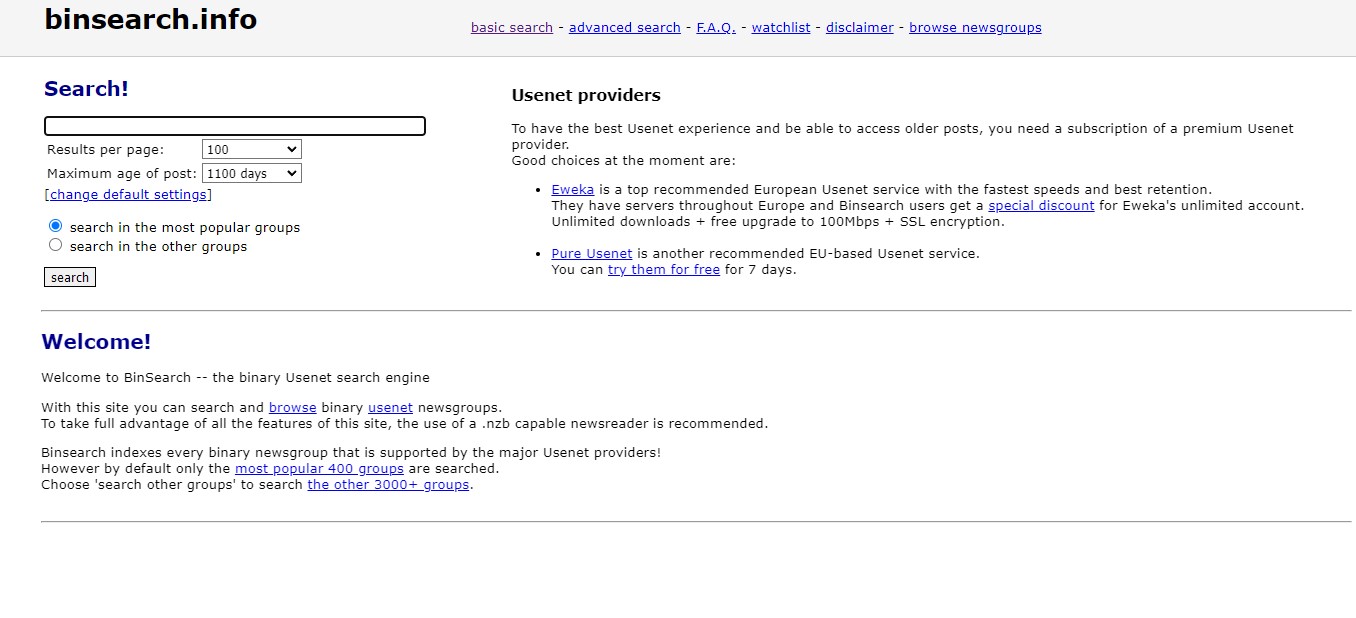What is a news server and why it matters?
Managing articles for a newsgroup

Years before British Scientist Tim Berners-Lee created the world wide web (WWW) protocol that we all use to access websites today, there was Usenet, a medium for the exchange of files and messages over the early internet. Amazingly, Usenet is still around and being used by people all over the world as an alternative to corporate social media platforms.
Early in Usenet’s history, the word “news” became part of Usenet’s lexicon, and it stuck, probably because it was one of the first information sharing platforms on the internet. Hence the word “news” is attached to many components of the Usenet protocol (NNTP).
At the core of Usenet is the Newsgroup - A topic based discussion forum. People post inside these forums on specific topics of interest. Each post is called an “article.”
The server that manages the storage and routing of the articles is called a news server. Usenet consists of many independently owned and operated news servers connected to one another to exchange articles using the NNTP protocol.
Today, most people access a news server by subscribing to a Usenet Provider which allows users to post articles to and transfer articles from their news servers. Every post to a news server is copied to all other news servers on the global Usenet network. Each news server has a different amount of retention (the length of time a posted article is available before being deleted). Some Usenet Providers’ news servers will keep posts only going back a handful of days, while others keep every post going back over a decade.
Here are TechRadar’s picks for Best Usenet Providers whose news servers carry the most Usenet articles.

What Is a news server?
The News Server stores articles posted directly to it, transmits those articles to other news servers, and receives articles posted to other servers that it does not already have. The server will store articles locally for a specific period of time known as retention.
Are you a pro? Subscribe to our newsletter
Sign up to the TechRadar Pro newsletter to get all the top news, opinion, features and guidance your business needs to succeed!
There are two main types of news servers; the transit server and reader server. Both use the Network News Transfer Protocol (NNTP). The transit server broadcasts uploaded articles to every other news server connected to Usenet. The transit servers route messages across the hierarchical structure of newsgroups and can balance the load effectively because they are connected to many peers.
The reader server enables users to read the messages stored in a hierarchical format through a “Newsreader” client that is local to the User’s computer and connects to the news server.
Some news servers are free to access while some are paid. The paid ones are faster and more reliable than the free ones and also have much longer retention periods with much higher completion rates. The more retention and the better the completion rates, the more articles you get access to for a more complete Usenet experience.
Attributes of a news server
The primary concerns for every operator of a news server are the storage and network capacity requirements needed to store and deliver the enormous number of articles posted to Usenet every day. For the user connecting to a news server, the primary concerns are:
- Completion - the percentage of Usenet articles posted to Usenet that are available on a provider’s servers
- Retention - How long the news server stores posts and makes them available to users before being deleted to make room on the news server for new articles.
- Speed - How fast the server can deliver articles requested by a user
Completion
Completion describes the percentage of articles that a specific server has compared to the total number of articles on Usenet. For example, if a server has an 80% completion rate, that implies it has 80% of all available Usenet articles. Theoretically, a server can host all the Usenet articles, but that is practically almost impossible because of issues like downtime, data loss, and storage limitations. That’s why many commercial news servers advertise a 99%+ completion rate and not 100%.
While many Usenet providers advertise a 99%+ completion rate, it’s important to look into the details. Does the provider clearly state the exact number of days of retention in its retention policy? Are articles in all binary and text newsgroups stored for the full retention period the provider advertises? Does the provider grow retention day-by-day instead of expiring the oldest articles? If this information is not readily clear, it’s unlikely you’ll get access to the full Usenet feed and will often run into issues where the posts you request are not available on that server.
Retention
Retention refers to how long a news server keeps an article after it gets posted to a newsgroup. Keeping articles on a news server takes up storage space, so it’s a critical metric for the operators. The more retention, the better, since it’s a key feature that determines how many posts you get access to.
Both the daily number and size of posts made to Usenet has grown dramatically in recent years and the storage requirements have grown with it. Retention periods among providers vary significantly, sometimes a difference of thousands of days. All of the top Usenet providers we recommend offer retention of well over 5,300 days and growing. The news server providers we recommend provide the best retention and completion rates for the best overall Usenet experience.
Speed
Speed is another important attribute and refers to how quickly the news server can deliver an article to you. The top providers buy premium bandwidth and traffic delivery from major ISPs. These are the ISPs where you are likely to get your Internet service from. By having a direct connection from the Usenet provider’s servers to your ISP, Usenet posts are delivered to you with faster and more reliable speeds.
Other providers that purchase cheaper bandwidth and traffic delivery will tend to have slower speeds that congest and lower speeds at the times when most people use the service. This is because ISPs prioritize traffic and lower cost providers have limited capacity to deliver Usenet requests into the top ISP networks with top ISPs, with lower tier routing taking a backseat to the priority routing that premium Usenet providers purchase.
Conclusion
Even though Usenet is one of the oldest systems on the internet, it’s still a fast and secure method for sharing ideas, information, and data. There are hundreds of thousands of Usenet users globally constantly exchanging ideas and posts on virtually any topic imaginable. There are dozens of news servers to select from to connect to over 100,000 newsgroups. Choosing the right news server from a quality Usenet provider will improve your Usenet experience. To make an informed choice, check out TechRadar’s recommended Usenet Provider list.
Stefan has always been a lover of tech. He graduated with an MSc in geological engineering but soon discovered he had a knack for writing instead. So he decided to combine his newfound and life-long passions to become a technology writer. As a freelance content writer, Stefan can break down complex technological topics, making them easily digestible for the lay audience.
